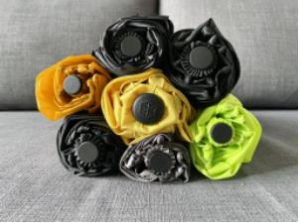Are you traveling to a rainy destination? Maybe you’ve just moved to a rainy climate? Or perhaps your trusty old umbrella finally snapped a stretcher, and you’re in dire need of a replacement? We selected a broad range of sizes and styles to use everywhere from the Pacific Northwest to the foothills of the Rocky Mountains, from urban centers and beyond. We tested traditional crook handle canopies, bright compact models, business-casual styles, and discrete travel-friendly versions.
We mentioned several metrics to compare each product’s nuances. In general, there are two different types of umbrellas on the market: compact models (that telescope) and straight models. Each has its own advantages and drawbacks. Compact models are lightweight and smaller in size when fully compressed, whereas the non-compact models tend to be heavier and aren’t as easy to carry. fixed-shaft models are generally more sturdy, however, and, as seen from our experiences, none of the non-compact models flipped inside-out in the wind during our tests.
We’ve put together an outline of what you should consider when purchasing an umbrella. But first, we’d like to provide more information about the distinctions between the various designs and the benefits of each one.
Non-Compact
These models, also known as fixed-shaft models umbrellas, were once the only type available. To close them up, the canopy simply drops around the shaft, leaving you with a cane-like stick. In the traditional models we’ve tested, the shafts are a single piece of wood or metal, which we often find to be quite sturdy. Because these canopies do not compress down, the spokes of the frames don’t have as many hinges. Overall, we found the simplicity of traditional models to be more durable and capable of withstanding repeated opening and closing. We also think these designs tend to win style points due to their more “refined” or classic look. An example of this is the totes Auto Open Wooden with its wooden features and crook handle.
The downside of non-compact models is typically their size and weight. One of our top performers, however, shows us that you truly can have it all: durability, light weight, and excellent rain protection. This is a fixed length model engineered to reap all the benefits of utilizing an umbrella in the first place. The simple shaft design is sized just right and can be reasonably strapped to a backpack. It even comes with its own lightweight mesh shoulder carrying sleeve.
Compact
Compact, or “travel” models, are designed to be conveniently with you for whenever a storm begins to brew. They combine telescoping shafts with folding canopies in order to be highly portable. Closed up, this type takes up significantly less space than the non-compact competitors. They also tend to be much more lightweight than traditional models. A great choice for travel, they are usually the only option for storing in your purse, tote bag, or briefcase.
The factors that make compact models so easy to transport, however, also tend to make them less durable. There are a few reasons for this, mainly due to there being more moving parts, such as hinges in the stretchers. Repeated use and abuse may weaken all of these moving aspects. The extra hinges also increase the likelihood that the canopy will flip inside-out during high wind. Furthermore, the more lightweight shafts of the compact models we’ve tested thus far feel less sturdy overall due to the overlapping telescoping tubes, which create a potential for unwanted rotation.


If you don’t know which umbrella to buy, you can go to our official website (www.ovidaumbrella.com), or contact us to recommend something suitable for you .
Post time: May-16-2022




